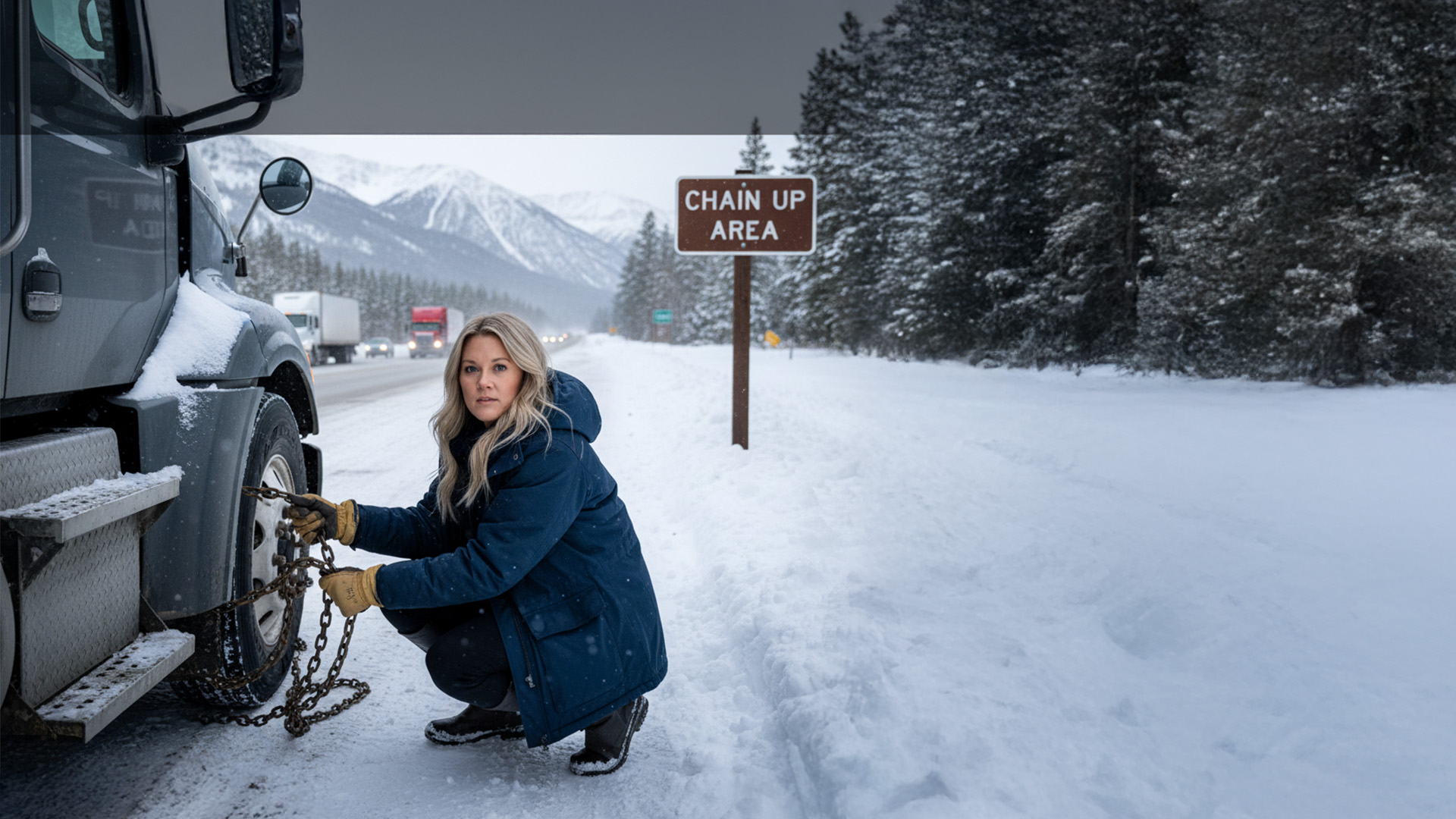What Are Tire Chains?
Tire chains metal devices secured around the tires are designed to provide traction when navigating snow-covered or icy roads. Tire chains are only designed to be used for short distances ideally when you’re trying to drive to a safe location or get through a mountain pass. You shouldn’t drive more than 25 or 30 miles per hour (mph) with them on.
Driving with tire chains on is a rough ride. If they come loose, they can do a lot of damage to your truck and tires. You can pop tires, tear up your truck or lose mud flaps.
Because of the damage they can cause, best practice is not to use them. Not only that but even if there are designated areas to chain up, they’re usually just on the side of the road. It can be dangerous and scary to chain up on the side of an icy, snow-covered road with traffic sliding by.
What Type of Chains Are There?
There are a few types of chains and other similar tools you can utilize to gain additional traction while driving on treacherous roads. They include automatic tire chains, single chains, dual chains, cables, tire socks and studded tires.
While automatic tire chains can be mounted to the tires, these aren’t used by truck drivers. Instead, drivers most often use single and dual chains that must be manually applied which can be both time-consuming and dangerous if you’re doing it on the side of the road. Single chains go over one individual tire while dual chains fit over two tires at once. They’re both heavier and take longer to put on.
Cables look similar to chains, but they’re lighter and cheaper. While they’re just as effective as chains, they’re very easy to bend and break and can usually only be used once.
Tire socks, or snow socks, are an alternative for tire chains albeit a very expensive one. They’re normally made of woven fabric and some sort of rubbery material. The socks wrap around the tire to cover the tread and increase traction. Some states don’t recognize tire socks as a suitable replacement for chains.
Studded tires can also be used in place of chains. Studded tires have studs in them to grip icy, snow-covered roads. These are put on instead of all-weather or winter tires. Some states don’t allow their use, however.
How to Put on Tire Chains
Even if your company doesn’t require you to use chains, it’s still good practice to know how to use them. If you encounter an emergency or end up in an area that requires them, you’ll know how to use them.
Putting on tire chains is time-consuming, especially if you’ve never done it. If you’ve chained before, it might take you 30 minutes to chain four tires. If you’ve never done it before, it could take 90 minutes.
Get to the safest place you can park to chain up. Then grab your chains. How many chains you put on will depend upon state regulations, but they don’t need to go on every tire.
Untangle the chains and ensure they’re clean of snow. Then you can begin to drape the chains over the select tires with the hooks facing out. Connect the chains. Then, you’ll need to drive forward and/or backward to get the chain on the rest of the tire.
Some tricks make chaining go quicker. For instance, I used to stack two short pieces of wood underneath the drive tire, drive up and then raise the axle off the ground. That allowed me to put the whole chain on in one go.
Tire Chain Laws By State
Tire chain laws are mandated on the state level. Tire chain laws dictate when you should, shouldn’t and must use tire chains. Many states allow chains when needed at the driver’s discretion, but some states restrict them depending on the time of year and type of chain.
Using the incorrect type of chain or using chains that aren’t in accordance with these laws can subject you to fines. Chains can not only damage your truck and trailer; they can also damage the roads. This is why states have laws regarding their usage.
For a detailed, state-by-state breakdown of tire chain regulations, read our full guide: Tire Chain Laws by State Failing to follow these laws can result in fines.
For more updated information, refer to each state’s Department of Transportation (DOT) website.




